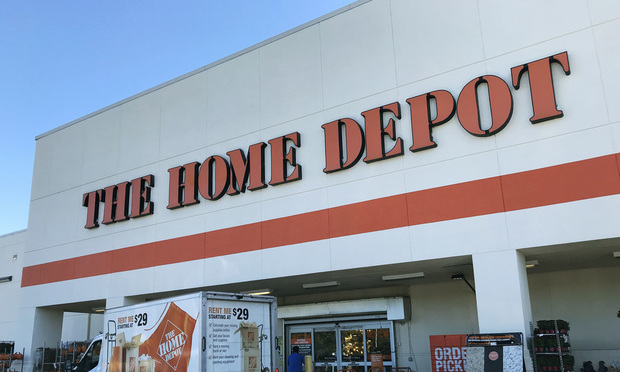Insurance-related risks are not always obvious and could result in a costly uninsured surprise for commercial leaseholders.
As insurance professionals, we have the skills and experience to help insureds review the insurance provisions in their commercial leases prior to signing the documents.
Related: 10 trends impacting the insurance industry
Although commercial lease agreements can be complex and time consuming to negotiate, business owners often fail to consult with their property and casualty insurance brokers on the implications of these contracts to their insurance needs or obligations.
What's more, only experienced P&C brokers are qualified to extract all of the risks related to insurance provisions in commercial leases. Failure to do so not only leaves insurable exposures unattended, but neglecting to dovetail a commercial insurance program with lease obligations can lead to significant uninsured risks and even bankruptcy.
Principals and their attorneys should understand these six critical risk and insurance provisions in commercial leases:

No 1: Who is responsible for insuring what?
Well-written insurance provisions in commercial leases will clearly define each party's insurance obligation. Language written by an attorney who is unfamiliar with insurance terms can lead to vagueness and misunderstandings. For example, a lease could read as follows: “Tenant is responsible for insuring their personal property and leasehold improvements… Landlord is responsible for insuring the building…”
In this case, the leaseholder's insurance representative should review and assist in making sure the language to ensure your policy will respond as it should.
Related: Real Or Personal Property?

No. 2: Insurance requirements of both parties
Many leases only include insurance requirements of the Tenant. But, in these cases, the tenant might be left with significant exposure if the landlord does not also purchase adequate insurance. Both parties should be required to purchase property insurance for the obligations noted above and also other policies, including general liability, auto liability and workers compensation.
Each party should name the other as an additional insured. Of course, a requirement for both parties to provide evidence of insurance is also recommended.
Related: 10 risks supermarkets face as the industry changes

No. 3: Who carries the liability burden and where?
Leases almost always define which areas of the building, or plot, are the tenant's responsibility. For example, the tenant is typically responsible for the actual space they occupy. If an employee or visitor slips and falls in the tenant's space, the lease allows for the landlord to tender any lawsuits filed against them to the tenant's insurance program. This becomes possible because the landlord is required to be named as an additional insured on the tenant's insurance policy.
The landlord typically asks to be held harmless and requires indemnification as well. The landlord should also be required to add the tenant as an additional insured on the landlord's general liability policy and be held harmless and indemnified for claims arising out of incidents which occur in the areas the landlord is responsible to maintain such as the parking lot, common lobby, or even the roof where work is being done by contractors.
Related: Care, custody or control exclusions: disputed and misunderstood

No. 4: Does the leaseholder have enough coverage for leasehold improvements?
Leasehold improvements include the alterations to a location to accommodate company operations such as internal walls, carpeting and trim. A typical property policy can provide coverage for leasehold improvements as part of the policy's personal property limit. All too often companies purchase only enough insurance for their own property such as stock, furniture, printers, phone systems and computers. Make sure to include all the right insurance provisions in commercial leases to have enough coverage for leasehold improvements.
Related: Market trend: Improved customer service and engagement

No. 5: Waiving a carriers' rights of subrogation against each other
Subrogation is a term describing an insurance company's right to legally pursue reimbursement of payments from the party responsible for causing the loss. Following is a useful rule of thumb: “Define who is responsible for insuring what. In the event of a loss, obtain coverage to restore the property and eliminate each other's carrier from hiring an attorney and filing a lawsuit.” This is known as a “mutual waiver of subrogation” and it should be included in every lease. If it is not, the leaseholder could be blamed and sued by a carrier to recover the proceeds needed to re-build an entire building.
Related: Damages proof in subrogation cases

No. 6: Abatement provisions/condemnation
Typical leases include a clause that turns off the lease payments if the building is uninhabitable or condemned for more than 30 to 90 days. It is important to understand this issue because it impacts the amount of business interruption insurance a company may need.
Remember, not all real estate and commercial insurance programs are the same. It is possible a coverage might need to be customized to meet the leaseholder's own unique needs and risk appetite. When and if a company engages a risk insurance team, management should choose people who fully understand how contracts and insurance provisions impact the business and bottom line.
Bob Dietzel is co-founder and Principal of KMRD Partners, Inc., a risk and human capital management consulting and insurance brokerage firm located in the Philadelphia region serving clients worldwide. Bob can be contacted at [email protected].
See also:
5 key facts about small business auto insurance coverage
Selling insurance to small business
Want to continue reading?
Become a Free PropertyCasualty360 Digital Reader
Your access to unlimited PropertyCasualty360 content isn’t changing.
Once you are an ALM digital member, you’ll receive:
- Breaking insurance news and analysis, on-site and via our newsletters and custom alerts
- Weekly Insurance Speak podcast featuring exclusive interviews with industry leaders
- Educational webcasts, white papers, and ebooks from industry thought leaders
- Critical converage of the employee benefits and financial advisory markets on our other ALM sites, BenefitsPRO and ThinkAdvisor
Already have an account? Sign In Now
© 2025 ALM Global, LLC, All Rights Reserved. Request academic re-use from www.copyright.com. All other uses, submit a request to [email protected]. For more information visit Asset & Logo Licensing.








